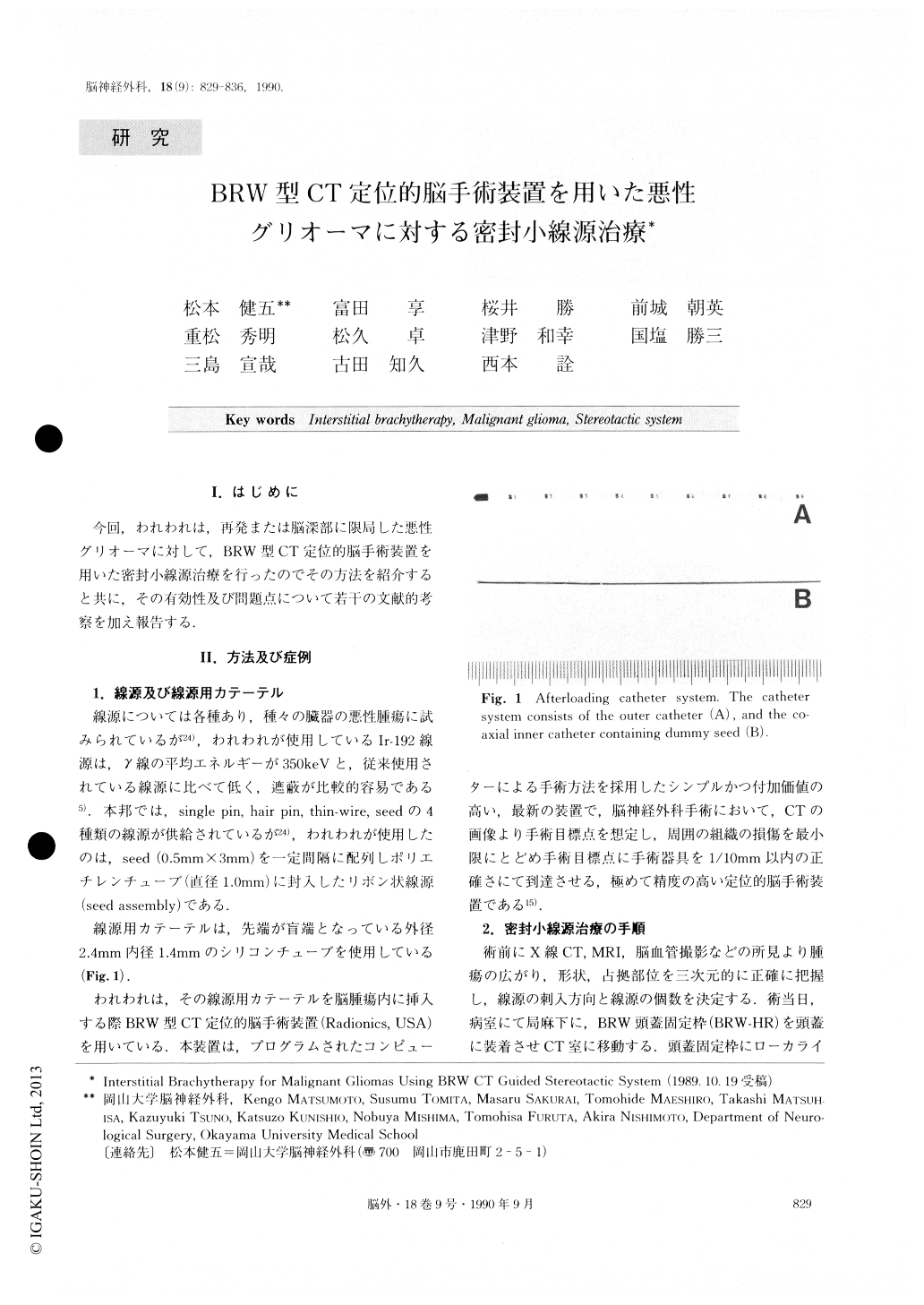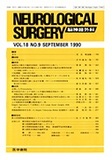Japanese
English
- 有料閲覧
- Abstract 文献概要
- 1ページ目 Look Inside
I.はじめに
今回,われわれは,再発または脳深部に限局した悪性グリオーマに対して,BRW型CT定位的脳手術装置を用いた密封小線源治療を行ったのでその方法を紹介すると共に,その有効性及び問題点について若干の文献的考察を加え報告する.
Eleven patients harboring recurrent or deep-seated malignant gliomas were treated by interstitial brachytherapy with 192Ir seed assembly, between June 1987 and September 1989. Implantations for the after-loaded catheter were performed using the Brown-Roberts-Wells (BRW) CT guided stereotactic system. The number of seeds and the distribution of the im-plants were chosen in such a way that the minimum tumor dose of 30-50Gy could be delivered to the sur-face or 1cm beyond the rim of the contrast enhance-ment.
The radioactive sources were held in the afterloaded catheters that were removed after the desired close had been deliverd. Response to therapy was measured by serial CT scans and clinical examination. Tumor regres-sions were seen by CT scans made 2 or 3 months after implantation. One tumor showed complete regression (CR) , four showed partial response (PR), one showed minor response (MR) and 5 showed no change (NC) . Overall response rate was 54%. Six patients died 3 to 18 months following implantation, and five are still alive 7 to 27 months after implantation.
No complications such as infection or hemorrhage were observed during the treatment. A patient harbor-ing large (6.5cm in diameter) recurrent glioblastoma in the rt. parietal robe required a craniotomy due to the mass growing for one and half month after implanta-tion, and radiation necrosis of the entire tumor mass was documented.
The technique of stereotactic interstitial implantation was clinically well tolerated and easily reproducible and our preliminary results seemed encouraging. Technical improvement to achieve an adequate isodose distribu-tion to cover the tumor volume might lead to improved survival rates.

Copyright © 1990, Igaku-Shoin Ltd. All rights reserved.


